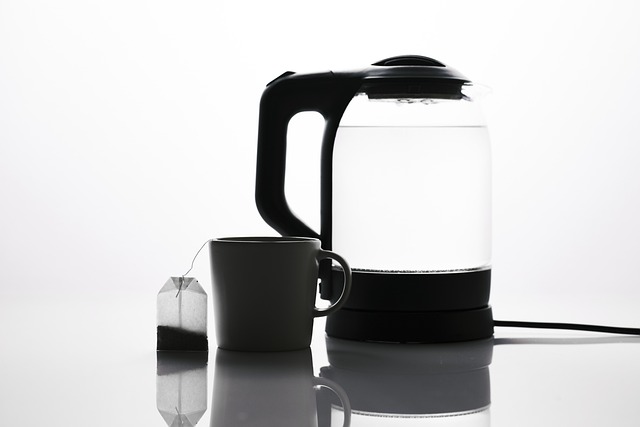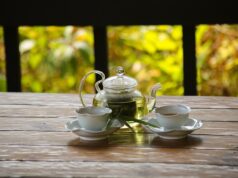Contents
From Traditional to Modern: A Look at the Evolution of Stovetop Tea Kettles
Tea has been an integral part of daily routine in many cultures for centuries. A cup of tea is not just a beverage; it is a ritual, a source of comfort, and a signal for relaxation. And what better way to enjoy a cup of tea than with a beautiful, functional tea kettle on the stovetop?
Over the years, tea kettles have evolved from traditional, handmade models made of materials like clay and copper to modern, sleek designs made of stainless steel and aluminum. While their basic function has always been the same – to heat water for tea – the design and style of tea kettles have changed significantly.
In this article, we will take a closer look at the evolution of stovetop tea kettles, exploring the cultural and technological factors that have influenced their design and functionality. From ancient times to modern day, the humble tea kettle has come a long way, and we are excited to explore its journey with you. So sit back, grab a cup of tea, and join us on this fascinating journey.
From Traditional to Modern: A Look at the Evolution of Stovetop Tea Kettles
Introduction
Tea kettles have been used for centuries to boil water for tea and other hot beverages. Over time, the design of tea kettles has evolved from purely functional to stylish and modern. In this blog post, we will take a look at the history of stovetop tea kettles and how they have changed over time.
The Early Tea Kettles
The first tea kettles were made of iron and used on top of an open fire or stove. They were heavy and had to be filled through a small hole in the lid. These early kettles did not have a spout and could only be poured by using a ladle. It was not until the early 18th century that the design of tea kettles began to evolve.
In the 1700s, tea became extremely popular in England. This led to an increase in demand for tea kettles. Manufacturers began to experiment with different materials and designs to improve the functionality of tea kettles.
The Victorian Tea Kettles
The Victorian era saw a great advancement in the design and style of tea kettles. Copper and brass became popular materials for tea kettles due to their ability to conduct heat quickly and efficiently. The shape of the kettle also evolved during this time, as kettles began to have more pronounced curves and decorative elements.
Tea kettles also began to feature spouts during this time period, which allowed for easier pouring. The spouts were often adorned with intricate designs and scrollwork, making the kettle not only functional but also a decorative piece.
Modern Tea Kettles
In the 20th century, tea kettles continued to evolve, with new materials and manufacturing processes making it possible to create sleek, modern designs. Stainless steel became a popular material for tea kettles due to its durability and resistance to rust and corrosion.
Electric tea kettles also became popular during this time, with the convenience of being able to plug the kettle in and have it heat up quickly. Electric tea kettles also allow for precise temperature settings, making it easier to brew different types of tea.
Conclusion
Tea kettles have come a long way since the first iron kettles used centuries ago. The evolution of tea kettle design has not only improved the functionality of the kettle but has also turned it into a decorative piece that can add style to any kitchen. With modern advancements such as electric kettles, brewing the perfect cup of tea has never been easier.
Frequently Asked Questions
What is a stovetop tea kettle?
A stovetop tea kettle is a type of kettle used for boiling water on a stove or cooktop. It typically has a spout and a handle and can be made of various materials such as stainless steel, glass, and ceramic.
What is the difference between traditional and modern stovetop tea kettles?
Traditional stovetop tea kettles are commonly made of cast iron and have a more classic, rustic design. Modern stovetop tea kettles, on the other hand, can come in a variety of materials and designs, with some even having electric or induction heating capabilities.
What are the benefits of a stovetop tea kettle?
Stovetop tea kettles provide an efficient and convenient way to boil water for tea, coffee, and other hot beverages. They can also be used for cooking and sterilization purposes. In addition, stovetop tea kettles come in a variety of designs and styles that can add to the aesthetic value of a kitchen.
What factors should I consider when choosing a stovetop tea kettle?
When choosing a stovetop tea kettle, factors to consider include the material of the kettle, the size and capacity of the kettle, the heating capabilities, and the design and style of the kettle. It is also important to ensure that the kettle is compatible with the type of stove or cooktop being used.
How do I clean a stovetop tea kettle?
The cleaning method for a stovetop tea kettle will vary depending on the material of the kettle. However, a common method is to fill the kettle with equal parts vinegar and water and bring it to a boil. Let the mixture sit in the kettle for a few minutes before pouring it out and rinsing the kettle with clean water. For stubborn stains, a mixture of baking soda and water can be used to create a paste that can be applied to the stained area and wiped off with a soft cloth.
The Ultimate Guide to Choosing the Best Tea Kettle Stovetop
What is a Tea Kettle Stovetop?
A tea kettle stovetop is a kitchen appliance designed for boiling water on a stovetop. It’s usually made of metal and has a spout for pouring water. These kettles are typically used for making tea or other hot beverages.
Features to Consider when Choosing a Tea Kettle Stovetop
1. Material – Tea kettle stovetops can be made from different materials like stainless steel, glass, copper, or ceramic. Choose a material that suits your needs for durability, heat retention, and style.
2. Capacity – The size of your kettle will determine how much water it can hold. Choose a capacity that fits your daily needs.
3. Heat Source – Kettles are designed for various heat sources, including gas, electric, and induction. Make sure you choose a kettle that works with your stovetop.
4. Design – Some tea kettle stovetops come with unique designs and finishes that can add aesthetic value to your kitchen.
Benefits of Using a Tea Kettle Stovetop
– Fast and Convenient – The stovetop kettle heats water quicker than other methods like microwaving or boiling on a stove.
– Enhanced Flavor – The heat source used in a tea kettle stovetop helps to preserve the natural flavor of tea and improves the taste of coffee.
– Energy Efficient – Heating only the amount of water needed for your tea helps you conserve energy.
Conclusion
When choosing a tea kettle stovetop, consider factors like capacity, material, and heating source to make a perfect cup of tea or coffee. Use this guide to help you make an informed decision on the best kettle for your needs.
Outbound Link: Tea Kettle – Wikipedia
From Traditional to Modern: A Look at the Evolution of Stovetop Tea Kettles
-
Introduction
- Tea kettle history dating back to ancient times
- Move from stovetop cooking to electric kettles
-
Traditional Stovetop Kettles
- Materials used (copper, silver, cast iron, etc.)
- Design features (spouts, handles, lids)
- Advantages and disadvantages
-
Modern Stovetop Kettles
- Materials used (stainless steel, glass, ceramic, etc.)
- Design features (whistles, ergonomic handles, temperature gauges)
- Advantages and disadvantages
-
Electric Kettles
- History and development
- Advantages and disadvantages
- Comparison to stovetop kettles
-
Conclusion
- Summary of key points
- The future of tea kettles


































